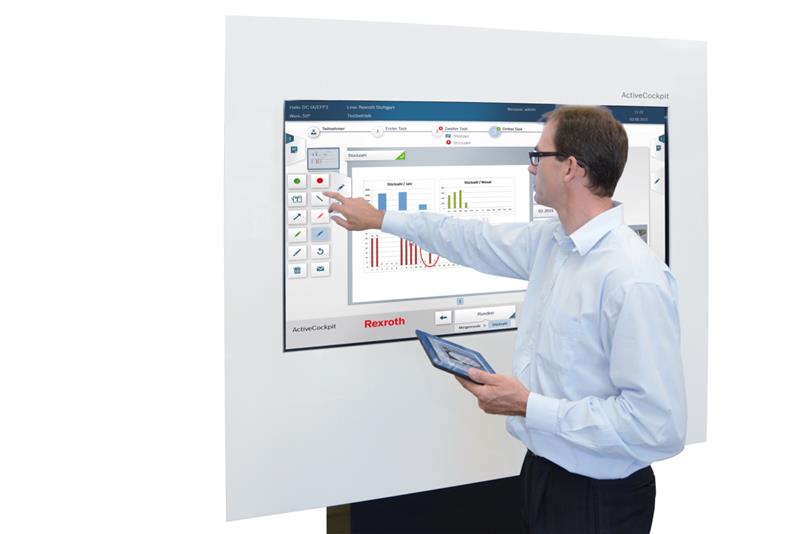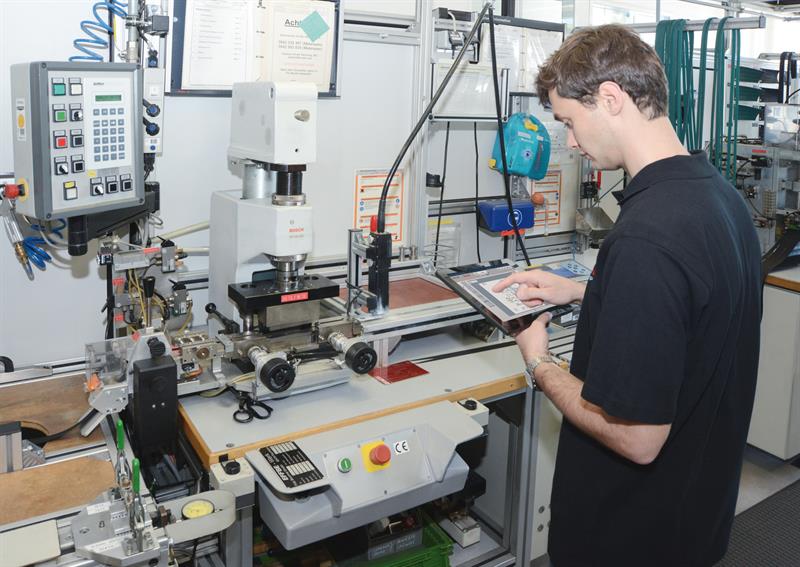One of the issues with Industry 4.0 is that people tend to define it in a manner that suits their business needs. The whole trend of Internet of Things, Cyber Physical Systems, Industry 4.0 et al are essentially variations on the same theme, and it probably will be the case when enough time has passed that this era will be looked back on as the fourth industrial revolution (after which Industry 4.0 is named).
The detail is less clear. Connectivity whether it is from man to machine, and/or machine to machine, and/or one system to another system, will be found in any system purporting to go under the Industry 4.0 banner. But does that mean that anything that is connected counts as Industry 4.0? Or to take it a stage further, anything with a control panel which can be remotely reset? Maybe any manufacturing system that can respond to change in real time?
Many people’s definition might be covered by Manufacturing Execution Systems (MES) or Enterprise Resource Planning (ERP) software, and they have been around for a couple of decades, which makes the revolution a slow one!
But most would concur that if the Industry 4.0 path was travelled, the destination would be some form of Smart factory – a place where orders went in and products went out, possibly with little human interference along the way, and such factors as efficiency, cost effectiveness and environmental performance were all maximised.
Bosch Rexroth lunched its own Industry 4.0 project back in 2013, more for its own manufacturing purposes rather than as a profit stream in its own right. Although this will be an evolving process, it now has its own Smart factory – or part of a factory at least – supported by some interesting capabilities that others could use to implement a similar solution.
Making valves blocks
The factory in question is the Bosch Rexroth factory at Homburg, Germany where hydraulic valves are manufactured for the mobile machinery market. While there are only six product types, there are in the region of 250 variants and previously the majority of the variants were assembled on manually intensive production lines.
Turning the factory in its entirety into a Smart factory, however, would not have been that smart. There are a number of production lines dedicated to the long runners – the standard range products that can be manufactured on masse, with few if any changeovers required on the production lines. Re-building these lines would have little benefit.
Alternatively, there was one line on which 30 to 50 variants of each of the six product families were produced, so in total there were over 200 products that came off it. This was to become the focus of the factory’s Industry 4.0 development and ultimately became its i4.0 line. Bosch has the luxury of having 250 plants worldwide in which to test new technologies and currently more than 50 pilot projects for ‘connected industry’ have been initiated. The Homburg i4.0 project kicked off in 2013 and was one of the company’s earliest investigations into this field. As a user of the technology the company believes it can save around €1bn in process improvements, while it can add to its turnover by a similar amount by selling the technology.
Describing the driving force behind the Homburg project, one of the Industry 4.0 pioneers at the site and deputy plant manager, Matthias Muller, observed: “We all want our own customised product, but at the cost of a serially produced part.” This is as true for customised consumer products as it is for bespoke industrial parts – valve blocks for tractors in the case of the Homburg facility.
The resulting i4.0 line consists of nine autonomous, intelligent workstations. Products contain an RFID chip so that the progress of the product can be identified at each workstation and appropriate instructions displayed to the operator. “We don’t want to guide the process and control the people,” continued Moller. “We want to guide the people to control the process.”
This highlights one of Bosch Rexroth’s principles in developing Industry 4.0 strategies – people remain the key. And people are very much a key part of the i4.0 line. This line is not about pure automation as might be expected in a Smart factory, it is about providing the most appropriate solution. In this case that involves manual assembly using all the information available to make the process efficient and failsafe.
 In the same way as the RFID tag identifies the product arriving at a workstation, the operator is identified by a Bluetooth connection, which will reveal a profile of that operator and skill levels, so instructions can be modified accordingly.
In the same way as the RFID tag identifies the product arriving at a workstation, the operator is identified by a Bluetooth connection, which will reveal a profile of that operator and skill levels, so instructions can be modified accordingly.
Other features of the workstations, which come under a system called ActiveAssist, include interactive worker instructions, hand tracking, ‘pick to light’ worker guidance, ultrasound positioning – essentially a combination of finely tuned sensing and guidance technologies. It guides assembly and then checks that the required action has taken place. The capabilities of the system, believes Bosch Rexroth, will appeal to many companies with a similarly low volume/high product mix output and as a consequence ActiveAssist will soon be finding its way onto the market as a product in its own right.
Perhaps going further down the Industry 4.0 route, and certainly further down the road to commercialisation, is ActiveCockpit. This was originally developed for this line, by the Homburg team, but following its success it has been rolled out to industry.
Part of the company’s definition of Industry 4.0 is ‘The unification of the real world of machines with the virtual world of the internet and information technology’, and while ActiveCockpit certainly fits the bill, the accent is on information rather than control. It is an interactive communication platform that offers real time access to process data. Real time is the key here. While many factories and organisations will pride themselves on up-to-date colour-coded spreadsheets that provide all sorts of information about quality safety and of course the products that are being made, they are only as up to date as the last time these sheets were printed off.
ActiveCockpit provides digital connection between operator, product, workstation and process. It collects and filters data which is then visualised on a whiteboard close to the production process. For all that it was developed for this site there are software connectors to make sure that any MES or ERP feeds into it.
In practice this means that the end customer will specify a tractor with the OEM and this information is automatically fed into the Bosch Rexroth production line at Homburg, that will then churn out the desired valve block within 24 hours. Muller said: “It is a step up from ‘delivery in sequence’, which is just picking from stock. This is a new level - ‘production in sequence’.”
Even though it remains a manually intensive process, it is the i4.0 developments at Homburg that have made this possible. It allows data to be amalgamated and visualised directly at the i4.0 line by all those who need to respond instantly to that data. Ultimately it provides better visualisation and decision making.
Ben Morgan, head of the Integrated Manufacturing Group at the AMRC was also in Homburg assessing the impact of the technology. He summed up: “It’s easy to measure output. Its less easy but possible to measure quality. But the real benefit to some and most difficult to quantify is flexibility.”
Designing equipment and system for Industry 4.0 still remains a moveable feast as, as stated before, it means different things to different companies, but the increasing evolution of modular solutions, like ActiveAssist and ActiveCockpit, could both make the process easier and perhaps help define the direction.
I4.0 implementation at Homburg has: Reduced set-up time from 450sec (in 2014) to 0 Inventory days reduced from 3 days to 1.5 Cycle times reduced from 474sec to 438 Overall production improvement – up 20% |








 Fact file
Fact file


